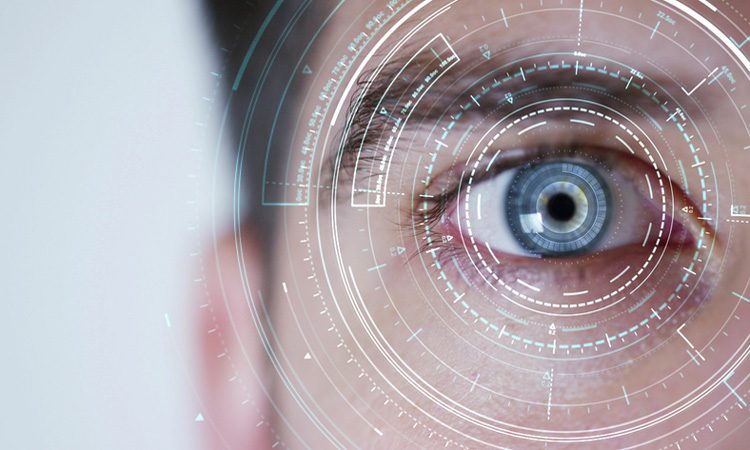Biometrics: The safest and fastest means of identification
Posted: 25 June 2019 | Emmanuel Wang | 1 comment
Increasing safety, reducing queues and enhancing customer satisfaction: Biometric technology seemingly has it all. Here, Emmanuel Wang, VP Border Control Market and Product Offer at IDEMIA, details how it believes the technology will further develop, and the security risks that must be considered.


What are the main advantages of using biometrics for passenger processing?
Biometrics are the only way of guaranteeing that a traveller is the person they claim to be without interrupting the continuous fl ow of passengers in and out of airports.
According to ICAO, in 2018 alone, 4.3 billion travellers were transported. This number has been steadily increasing for years and is set to double by 2030. This means that instead of trying to expand infrastructure and resources, we need to change the way we process passengers. Biometrics and passenger identity management address this need. The advantages are manifold:
Join us live: Shaping the Next Generation of Hold Baggage and Air Cargo Screening
Join us live for an insightful webinar on 11th December at 14:00 GMT, in collaboration with Smiths Detection, as we explore the strategic balance of operational efficiency, regulatory compliance, and sustainability in high-volume security environments.
This session offers a focused look into future-proofing your security strategy.
Key learning points
- Cost Reduction: Strategies to minimize bag travel time while simultaneously reducing operational costs.
- Regulatory Roadmap: Insights into the next wave of regulatory changes and their impact on future investment decisions.
- Sustainable Systems: Practical approaches to building sustainability into security systems and lowering the total cost of ownership (TCO).
- Scalable Solutions: Real-world examples of scalable systems supporting current airport growth and preparing for tomorrow.
Register now for expert insights, case studies, and actionable strategies on operational efficiency!
For passengers, biometrics:
- Support a faster passenger-processing experience, which makes the airport journey more pleasant and stress-free
- Reduce bottlenecks and minimise queuing, leaving more time to enjoy a cup of coffee, duty-free or the airline lounge.
For airlines/airlines alliances/ airports, biometrics:
- Offer a quick and secure identification of passengers
- Improve the use of existing infrastructure to improve on-time performance (OTP)
- Improve customer satisfaction and quality rank (ASQ ranking or Skytrax).
Above all, it is the safest and fastest means of identification. Whether it be fingerprints, iris or biometric facial recognition, only you can be you!
How do you believe biometric technology will develop in the future?
Overall, biometric technology is reliable, but there is still a development focus on facial recognition. Accuracy levels regarding fingerprints and iris are very high for large populations, however, facial recognition performance has not yet been optimised. Having said that, IDEMIA’s False Acceptance Rate (FAR) is currently one of the lowest. Airports also need biometric systems which are fully gender, age, diversity and spoof proof, especially as we can now start the check-in process from home. We even have a full range of walkthrough capture devices that deliver the best non-invasive experience for both travellers and our customers.
Are there security risks that have to be considered when implementing biometric technology?
Biometrics is the basis of our identity. It is physically who we are. Therefore, the data and the surrounding process have to be treated with the utmost care and attention.
At IDEMIA, our solution for biometric passenger processing is fully GDPR compliant. The core privacy-by-design principles are based on encryption. We regularly help our customers with privacy impact assessments, which is key for any project to address the risks and the legal framework for processing personal data.
Airports and airlines have gone beyond the traditional approach, by developing a Passenger ID platform to manage single-token processes through touchpoints. This is a solution where your face is your boarding pass, ensuring the passenger remains in control of their own data at all times.
As long as the framework and the rules, which are set up to protect citizens, are followed, the use of biometrics can only provide a better and smoother airport experience.
Join our free webinar: Revolutionising India’s travel experience through the Digi Yatra biometric programme.
Air travel is booming, and airports worldwide need to move passengers faster and more efficiently. Join the Digi Yatra Foundation and IDEMIA to discover how this groundbreaking initiative has already enabled over 60 million seamless domestic journeys using biometric identity management.
Date: 16 Dec | Time: 09:00 GMT
rEGISTER NOW TO SECURE YOUR SPOT
Can’t attend live? No worries – register to receive the recording post-event.
Issue
Related topics
Biometrics, Border control, Passenger experience and seamless travel, Regulation and Legislation, Terminal operations



















Totally agree